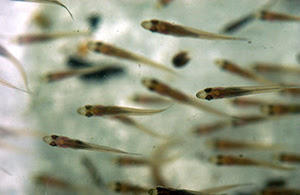On August 17, the Bureau of Land Management (BLM) issued a Record of Decision announcing that recreational target shooting will remain open to the public within the Sonoran Desert National Monument (SDNM) in Arizona.
The decision follows years of uncertainty surrounding the availability of target shooting access within SDNM. In 2011, BLM announced that the entirety of the monument’s nearly 500,000 acres – a vast landscape historically used by target shooters concentrated in the Phoenix metropolitan area – would be entirely closed to recreational shooting through a BLM-initiated planning process. Following the proposed closure, the Wildlife and Hunting Heritage Conservation Council (WHHCC), an appointed federal advisory committee tasked with providing Department of the Interior agencies with recommendations on issues of interests to America’s sportsmen and women, advised BLM to reconsider the decision.
Based on the WHHCC’s recommendation, BLM went back to the drawing board and issued a revised plan that maintained target shooting access throughout much of the SDNM. In 2015, a U.S. District Court in Arizona found BLM’s revised plan had violated the Federal Land Policy and Management Act (FLPMA) and National Environmental Policy Act (NEPA) by failing to properly evaluate the impacts of recreational shooting on the monument. As a result, BLM was ordered to temporarily close 10,600 acres to recreational target shooting in order to study these impacts.
Access challenges on the SDNM highlighted larger issues surrounding the management of recreational shooting on BLM lands throughout the West. In 2011, the WHHCC, including Congressional Sportsmen’s Foundation (CSF) President Jeff Crane and Vice President Gary Kania, provided constructive feedback related to a proposed nationwide BLM recreational shooting policy that would have set the stage for large scale closures of lands that provide shooting opportunity across the region. As a result, then Secretary of the Interior Ken Salazar issued a memo directing BLM to halt further development of the draft policy.
Following the ruling in the 2015 lawsuit, BLM further evaluated the impacts of shooting on the monument and solicited comments from a variety of stakeholders and agencies, ultimately concluding that an additional 2,600 acres are suitable for recreational target shooting on the SDNM. As part of this process, CSF joined several other sportsmen’s groups in encouraging BLM to modify its draft proposal to include provisions for public access to several popular target shooting locations originally proposed for closure. Following the public comment period and a similar recommendation from the Arizona Game and Fish Department, recommended changes were incorporated into the plan outlined in the Record of Decision.
The August 17 notice of the Record of Decision for the Resource Management Plan will ensure 435,700 of the 486,400 acres of the Sonoran Desert National Monument in Arizona will remain open to recreational target shooting. According to the BLM, approximately 95 percent of the 12.2 million acres of BLM lands in Arizona are open to recreational target shooting.
“BLM lands have long provided important access for recreational shooters and hunters looking to sight in their rifles near Phoenix,” said CSF’s Senior Director of Federal Land Policy, Andy Treharne. “BLM’s willingness to listen to the concerns raised by these public land users and identify solutions to meet their needs is greatly appreciated.”







